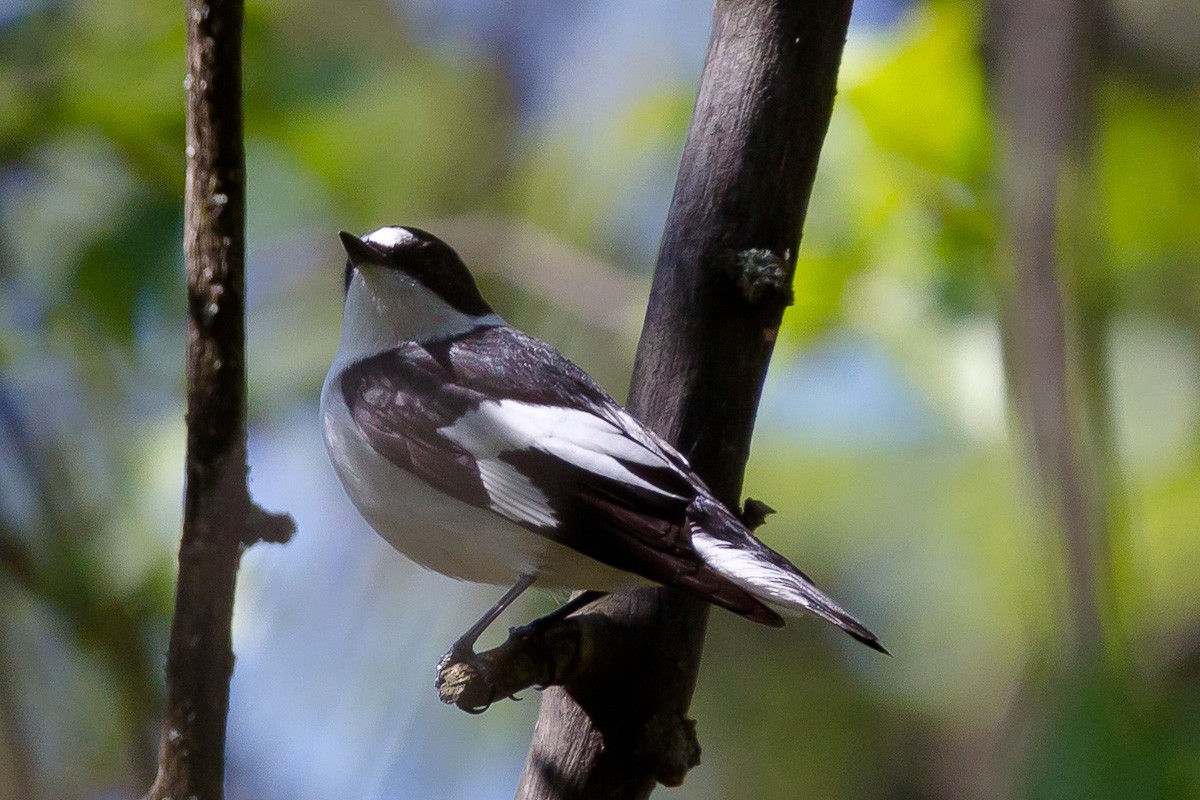Collared Flycatcher
A species of Ficedula Flycatchers Scientific name : Ficedula albicollis Genus : Ficedula Flycatchers
Collared Flycatcher, A species of Ficedula Flycatchers
Botanical name: Ficedula albicollis
Genus: Ficedula Flycatchers
Content
Description General Info
 Photo By Ekytza , used under CC-BY-SA-4.0 /Cropped and compressed from original
Photo By Ekytza , used under CC-BY-SA-4.0 /Cropped and compressed from original Description
The collared flycatcher (Ficedula albicollis) is a small passerine bird in the Old World flycatcher family, one of the four species of Western Palearctic black-and-white flycatchers. It breeds in southeast Europe (isolated populations are present in the islands of Gotland and Öland in the Baltic Sea, Sweden) and Eastern France to the Balkan Peninsula and Ukraine and is migratory, wintering in sub Sahara Africa. It is a rare vagrant in western Europe. This is a 12–13.5 cm long bird. The breeding male is mainly black above and white below, with a white collar, large white wing patch, black tail (although some males have white tail sides) and a large white forehead patch. It has a pale rump. The bill is black and has the broad but pointed shape typical of aerial insectivores. As well as taking insects in flight, this species hunts caterpillars amongst the oak foliage, and will take berries. Non-breeding males, females and juveniles have the black replaced by a pale brown, and may be very difficult to distinguish from other Ficedula flycatchers, particularly the European pied flycatcher and the semicollared flycatcher, with which this species hybridizes to a limited extent. They are birds of deciduous woodlands, parks and gardens, with a preference for old trees with cavities in which it nests. They build an open nest in a tree hole, or man-made nest-boxes. Normally 5-7 eggs are laid. The song is slow strained whistles, quite unlike the pied flycatcher. Pied flycatchers can mimic the song of the collared flycatcher in sympatric populations. The genus name is from Latin and refers to a small fig-eating bird (ficus, "fig") supposed to change into the blackcap in winter. The specific albicollis is from Latin albus, white, and collum, "neck". The collared flycatcher is used as a model species in both ecology and genetics and it was one of the first birds that had its full genome sequenced. Repeated spectrometric data taken from male Collared Flycatchers has revealed that plumage reflectance should be measured during courtship, the primary period of sexual signalling, with spectral traits declining over the breeding season. 
Size
13 cm
Colors
Black
White
Life Expectancy
8 years
Nest Placement
Cavity
Feeding Habits
Collared Flycatcher primarily consumes insects, adeptly catching them mid-flight. It also forages for caterpillars among oak leaves and supplements its diet with berries, showcasing a diverse feeding repertoire.
Habitat
Collared Flycatcher primarily dwells in open, moist deciduous woodlands and forest edges with a rich presence of old trees for nesting. It favors environments with species such as oak and beech, adapting to warmer, continental climates. Outside the breeding season, collared Flycatcher resides in Southern Africa's Brachystegia and acacia woodlands, typically at elevations of 800–1600 meters.
Dite type
Insectivorous
General Info
Feeding Habits
Bird food type
Sounds
Call
Recording location: Zambia
Species Status
Not globally threatened.
Scientific Classification
Phylum
Chordates Class
Birds Order
Perching birds Family
Old world flycatchers Genus
Ficedula Flycatchers Species
Collared Flycatcher